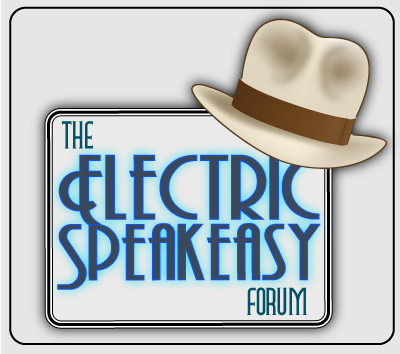
Warp Speed, Mr. Cousineau... (67 Minutes)
Jason Cousineau and Eric Renderking Fisk | March 15th, 2021
Jason Cousineau and Eric Fisk discuss The United States Navy claims to have patents on technology from the realm of Science Fiction. The topic then moves to legitimate scientific papers discussing the possibility of a warp drive with our current level of technology and the moral and political implications of traveling to other worlds with our current intelligence and morality level.
And before the NSA cuts our communication line, Jay and Eric discuss the time passages and the joy of doing paranormal episodes while drinking Kraken Black Spiced Rum...
Subscribe to The Fedora Chronicles Stitcher, Spotify, Overcast, SoundCloud, iTunes, and PlayerFM
You can support the show by visiting our Zazzle page - exactly 12.5 percent of every purchase goes to keeping this and other shows on The Fedora Chronicles Network on the air. Coming soon we will have our new line of “Modern Fashion Is Evil” line of shirts, coffee mugs, and other swag.
Or, become a Patreon – click the Patreon link and for a mere dollar a month you’ll get early access to the podcasts, updates on what we’re working on, and so much more. Thanks for all your support in advance, and thank you to our listeners who have already contributed. With that said – Thanks for listening, enjoy the show!
Show Notes and Links
Big Think: "U.S. Navy controls inventions that claim to change "fabric of reality" Inventions with revolutionary potential made by a mysterious aerospace engineer for the U.S. Navy come to light." Paul Ratner | February, 2021
Among Dr. Pais's patents are designs, approved in 2018, for an aerospace-underwater craft of incredible speed and maneuverability. This cone-shaped vehicle can potentially fly just as well anywhere it may be, whether air, water or space, without leaving any heat signatures. It can achieve this by creating a quantum vacuum around itself with a very dense polarized energy field. This vacuum would allow it to repel any molecule the craft comes in contact with, no matter the medium. Manipulating "quantum field fluctuations in the local vacuum energy state," would help reduce the craft's inertia. The polarized vacuum would dramatically decrease any elemental resistance and lead to "extreme speeds," claims the paper.
Not only that, if the vacuum-creating technology can be engineered, we'd also be able to "engineer the fabric of our reality at the most fundamental level," states the patent. This would lead to major advancements in aerospace propulsion and generating power. Not to mention other reality-changing outcomes that come to mind.
Among Pais's other patents are inventions that stem from similar thinking, outlining pieces of technology necessary to make his creations come to fruition. His paper presented in 2019, titled "Room Temperature Superconducting System for Use on a Hybrid Aerospace Undersea Craft," proposes a system that can achieve superconductivity at room temperatures. This would become "a highly disruptive technology, capable of a total paradigm change in Science and Technology," conveys Pais.
The Independent: "Scientists develop model for faster-than-light warp drive. ‘A class of subluminal, spherically symmetric warp drive spacetimes, at least in principle, can be constructed based on the physical principles known to humanity today,’ the scientists say," by Adam Smith | March 8th, 2021
Scientists claim they have developed a physical model for a warp drive - a device that would allow spacecraft to travel at faster-than-light speeds.
“We present the first general model for subliminal positive-energy, spherically symmetric warp drives”, the paper’s abstract states.
“Conceptually, we demonstrate that any warp drive, including the Alcubierre drive, is a shell of regular or exotic material moving inertially with a certain velocity. Therefore, any warp drive requires propulsion. We show that a class of subluminal, spherically symmetric warp drive spacetimes, at least in principle, can be constructed based on the physical principles known to humanity today.”
The scientists’ theories are based on the Alcubierre warp drive, named after theoretical physicist Miguel Alcubierre. In his paper’s abstract, published in 2000, he wrote that the drive world work by modifying spacetime.
Centauri Dreams Imagining and Planning Interstellar Exploration: "Thoughts on a New Paper by Erik Lentz" Paul Gilster | March 11th, 2021
On the subject of faster than light travel, much of the work in the journals has evolved from Miguel Alcubierre’s now well known paper “The Warp Drive: Hyper-fast travel within general relativity,” which presented the idea of a ‘bubble’ of spacetime within which a volume of flat space could exist. In other words, it might be possible to enclose a spacecraft within such a bubble. While there is a physical restriction on objects within spacetime moving faster than the speed of light, spacetime itself is theoretically capable of expansion without limit — this is essentially the notion of ‘inflation’ that drives most current thinking about the earliest moments of the universe...
Erik W. Lentz: "Hyper-fast (as in faster than light) solitons within modern theories of gravity have been a topic of energetic speculation for the past three decades. One of the most prominent critiques of compact mechanisms of superluminal motion within general relativity is that the geometry must largely be sourced from a form of negative energy density, though there are no such known macroscopic sources in particle physics. I was recently able disprove this position by constructing a new class of hyper-fast soliton solutions within general relativity that are sourced purely from positive energy densities, thus removing the need for exotic negative-energy-density sources. This is made possible through considering hyperbolic relations between components of the space–time metric’s shift vector. Further, these solutions are sourceable by a classical electronic plasma, placing superluminal phenomena into the purview of known physics. This is a very exciting breakthrough that I hope to have more report on soon."







